|
Full resolution versions of wildflower photos available on flickr. 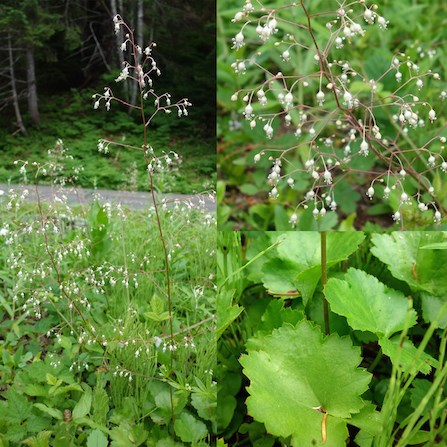
NPS Photo Alumroot, CreviceHeuchera micrantha This plant has tall, branched flowering stems, with numerous tiny white flowers. Leaves basal, lobed, and mildly-toothed. Found on drier, rocky banks and cliffs below 5,000 feet (1,500 m). 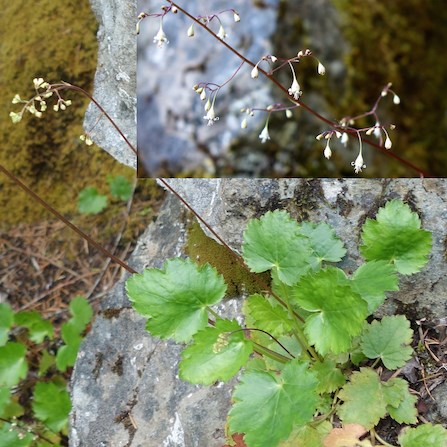
NPS Photo Alumroot, SmoothHeuchera glabra 
NPS Photo Bog-Orchid, WhitePlatanthera leucostachys 
NPS/Emily Brouwer Photo BunchberryCornus canadensis Also known as dwarf dogwood, this common flower has whorls of leaves centered around four white petal-like bracts, while the actual flowers are small and greenish-white. Found in forests up to 3,500 feet (1,066 m). 
NPS Photo CandyflowerClaytonia sibirica Also known as siberian miner's-lettuce, this small-flowered plant has long-stemmed oval basal leaves in addition to paired leaves going up the stem. The flower petals are distinguished by faint pink stripes or can sometimes appear pinkish in color. It is common in moist forests up to 5,000 feet (1,500 m). 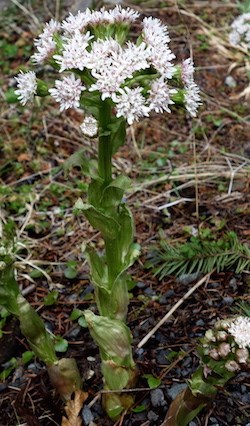
NPS Photo Coltsfoot, SweetPetasites frigidus One of the first flowers to appear in spring, this plant is marked by its single, stout flowering stem, topped with a large ball of composite white flowers. The stem can be 16 inches (40 cm) tall with short, clasping leaves. Large, toothed lobed leaves with wooly undersides also emerge directly from the rootstock on short stalks. Common in wet areas, particularly along streams and roads. 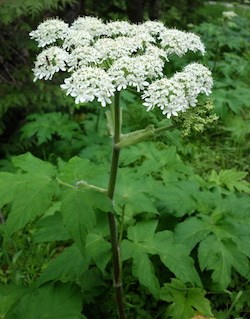
NPS Photo Cow-parsnipHeracleum lanatum 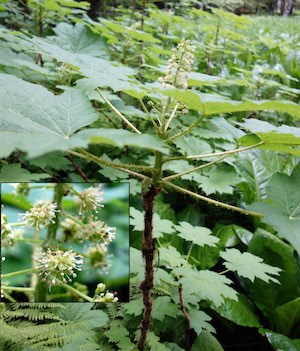
NPS Photo Devil's ClubOplopanax horridus 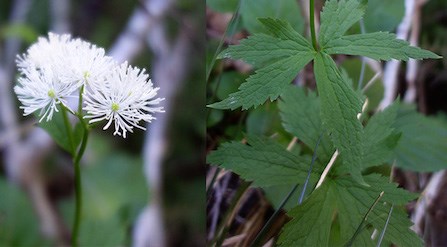
NPS Photo False BugbaneTrautvetteria caroliniensis 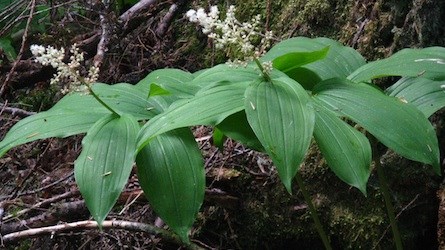
NPS, Bev Killam False Solomon's SealSmilacina racemosa Broad leaves alternate along the stem of this plant, with flowers clustered at the terminal of the stem. Flowers give way to red berries. Fairly common in lower elevations, up to 5,000 feet (1,500 m), in moist woods and along stream banks. 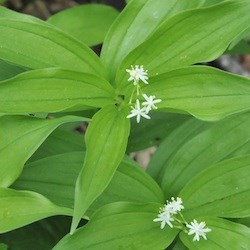
NPS Photo False Solomon's Seal, Star-floweredSmilacina stellata Alternating leaves very similar to the related species false Solomon's seal (S. racemosa), but with only a few (5-10) star-like flowers in a short terminal cluster at the end of the stem. Similar habitat as S. racemosa, but more common in the park, particularly at Box Canyon. 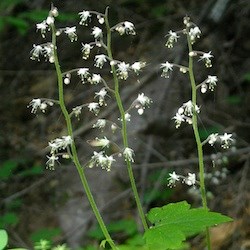
NPS Photo FoamflowerTiarella trifoliata Very common in moist forests, often forming dense carpets sprinkled with clusters of tiny white flowers like "specks of foam". Leaves mostly basal with three, toothed lobes. 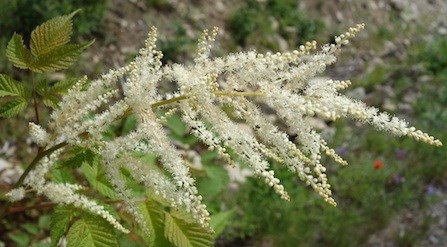
NPS Photo Goat's BeardAruncus dioicus This perennial plant can be mistaken for a shrub, with robust stems 3-6 feet (1-2 m) tall. Leaves divided, with toothed leaflets, and flowers cluster on long, drooping stems. Common up to about 4,000 feet (1,219 m) along wet cliffs, open wooded banks, and roadsides. 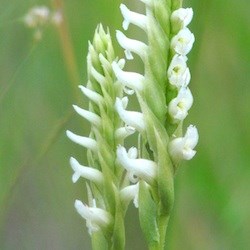
NPS, Crow Vecchio Hooded Ladies' TressesSpiranthes romanzoffiana This plant features geometrically precise flowers arranged in rows of three twisting around the stem. Leaves are slender and mostly basal. Typically found in wet meadows, such as the Longmire Meadow, though can also colonize open, disturbed ground. 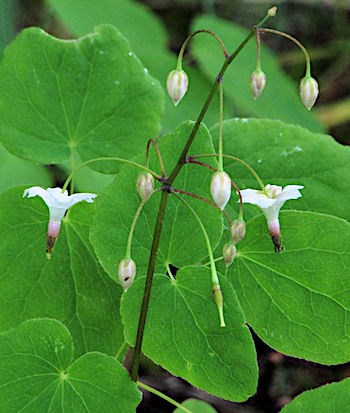
NPS/C. Vecchio Photo Inside-out FlowerVancouveria hexandra 
NPS Photo Large-leaf SandwortMoehringia macrophylla This plant has several leafy stems branching from spreading rootstock. Leaves are slender and lance-shaped, and each stem supports 2-6 white flowers. Common in moist, shady areas up to about 6,000 feet (1,800 m). 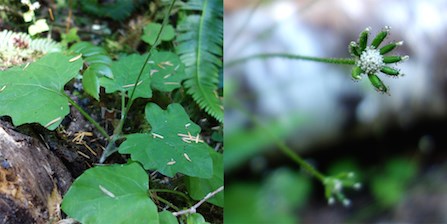
NPS Photo PathfinderAdenocaulon bicolor This common forest plant is also called trail plant because the leaves can be flipped over, their silvery, fuzzy undersides marking the way. Leaves triangular in shape with wavy edges and mostly basal, while the flower stem is 12-40 inches (30-100 cm) tall. Tiny white flowers form a disk with only the outer flowers fertile, maturing to form a stalked glandular seed. 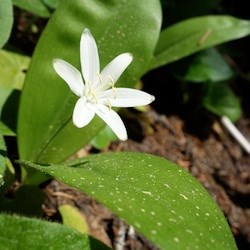
NPS Photo Queen's CupClintonia uniflora Very common in deep forest below 5,000 feet (1,500 m) elevation, this plant has a single large white flower framed by 2-3 glossy leaves. The flower produces a single dark blue berry. 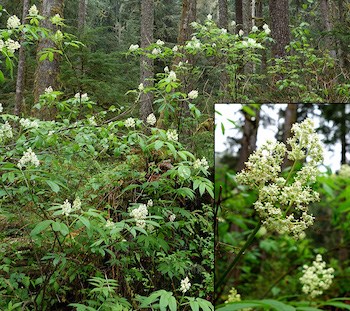
NPS Photo Red ElderberrySambucus racemosa 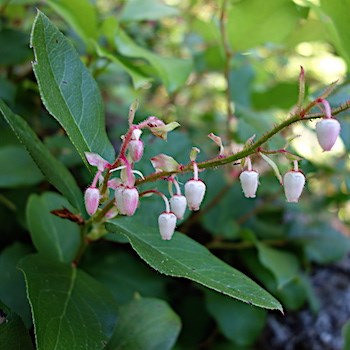
NPS Photo SalalGaultheria shallonThis abundant shrub is a common ground cover in Mount Rainier's forests. Usually about 3 feet (1 m) tall, it can grow into thickets up to 6 feet (2 m) tall. Leaves are tough and dark green, oval-shaped with sharp points, and toothed margins. Flowers are bell-shaped, pinkish-white, and hang off one side of a long stem. 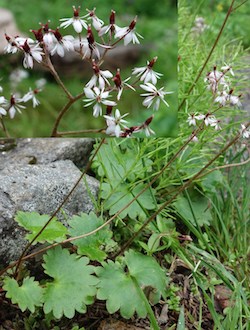
NPS Photo Saxifrage, Nelson's BrookSaxifraga nelsoniana ssp. cascadensis This plant has broad, toothed basal leaves. Leaf stalks are hairless, but the stems of the flowers have long hairs and can be reddish in color. Flower petals are white with no spots. Common in the park up to 6,000 feet (1,829 m) in rocks around water, particularly near Mowich Lake. 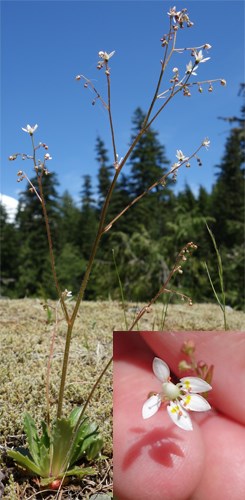
NPS Photo Saxifrage, RustySaxifraga ferruginea Also known as Alaska saxifrage, this plant has mostly basal leaves with branched flowering stems 4-12 inches (10-30 cm) tall. Flowers are irregular, with 3 larger petals with two yellow spots and two smaller petals without spots. Petals are also distinctly stalked. Look for this flower along wet cliffs, mossy rock outcrops, and stream banks in mid to low elevations. 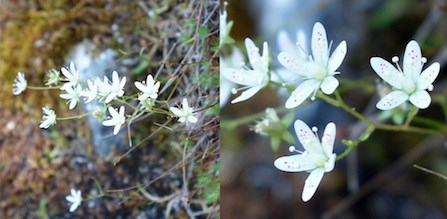
NPS Photo Saxifrage, Yellow-dotSaxifraga bronchialis ssp. austromontana Less common than rusty saxifrage, this plant can still be found in the park in drier, rocky places, usually in shade, between 3,000-8,000 feet (914-2,438 m). Flowers have yellow to orange spots, supported on branched stems 4-8 inches (10-20 cm) tall. 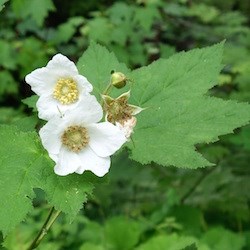
NPS Photo ThimbleberryRubus parviflorus This common shrub has woody stems with dark brown shredding bark and no thorns. Leaves have 3-5 fine toothed lobes and flowers are white, in clusters of 2-9. Thimbleberry fruit is edible, similar to raspberries. Found in moist woods up to 4,000 feet (1,219 m). 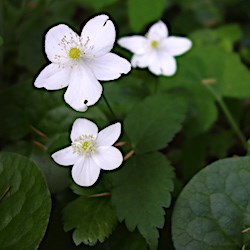
NPS Photo Three-leaved AnemoneAnemone deltoidea Also known as Columbian wildflower, this plant has a white, five-petaled flower on a single stalk, rising above three, toothed basal leaves that give it its name. Common in moist forest at low elevations, particularly on the west side of the park. 
NPS Photo Vanilla LeafAchlys triphylla This widespread plant can be found throughout the park, particularly along roadsides. Leaves have three fan-shaped bluntly-toothed leaflets, supported on stalks about 4-12 inches (10-30 cm) tall. Numerous tiny flowers rise above the leaves in a white spike. 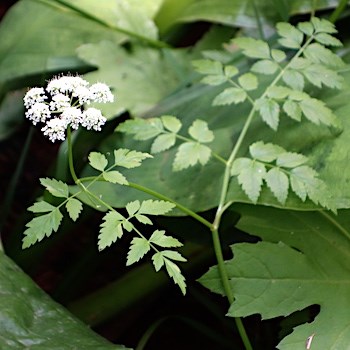
NPS Photo Water ParsleyOenanthe sarmentosa 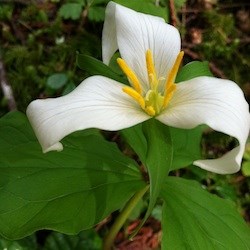
NPS Photo Western TrilliumTrillium ovatum This easily-recognizable and early-blooming flower features three leaves at the top of the stem framing a single flower with three large white petals. Very common throughout the park up to 5,000 feet (1,500 m). 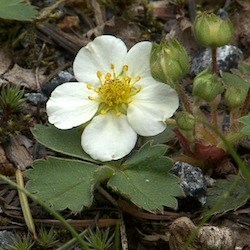
NPS Photo Wild StrawberryFragaria vesca Much smaller than their agriculturally-grown relatives, wild strawberries produce bright red fruit less than half an inch (approx. 8 mm) long. Leaves are split into three, toothed, hairy leaflets. Commonly found growing in spreading patches in open woods, and along roadsides and trails. 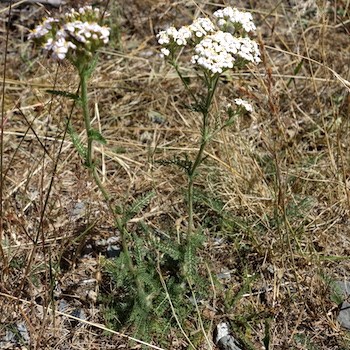
NPS Photo YarrowAchillea millefolium Return to Wildflower Guide |
Last updated: April 1, 2025
